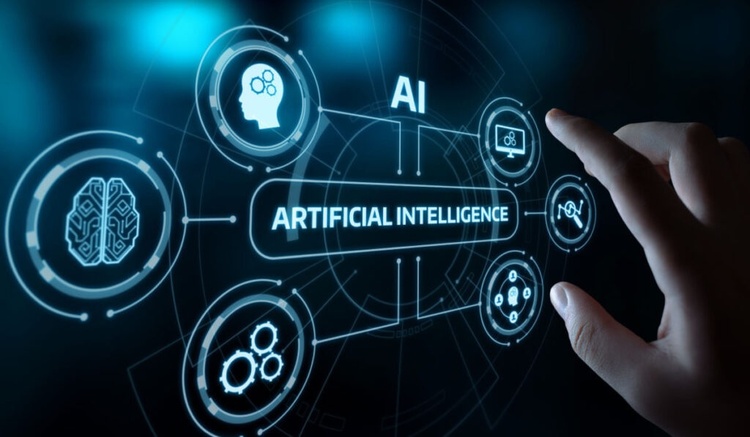
What are the types of AI?
What are the types of AI? Understand how they are classified and evolve
From simple automation to superintelligence, see what distinguishes each artificial intelligence model
It's no longer news that artificial intelligence (AI) is behind almost everything we use in our daily lives – from work to leisure, including organizing our home schedule, and so on. This widespread presence is only possible because there are different types of AI, developed to perform specific tasks or to learn autonomously according to their purpose.
What reaches us is the final answer, but each type has its role in the functioning of applications, platforms, and digital services. All this technology forms a complex invisible network that transforms simple data into personalized decisions, predictions, and experiences.
While some are highly specialized and operate within defined limits, others can (theoretically) learn and act with flexibility similar to humans. To understand this universe, experts usually classify the types of artificial intelligence according to two criteria: by resources (or capacity) and by functionalities (or mode of operation). This distinction helps to understand what AI is capable of doing and how far it can go, as we will see below.
Types of artificial intelligence by features
In this aspect, we can assess how well AI can adapt to get close to human reasoning. On this scale, the main types of AI are narrow, general, and superintelligent.
Narrow AI (ANI – Artificial Narrow Intelligence)
This is the current stage of the technology, and also the best known to the general public.
Narrow (or weak) AI is programmed to perform specific tasks with high performance, but within strict limits. In other words, this model is an expert, but it cannot make connections or "think" about the world broadly, because everything it does is based on pre-trained patterns or data.
ChatGPT, for example, is very efficient at answering questions and generating texts, but it could not drive a car or diagnose diseases. Similarly, Gemini is capable of interpreting texts, images, and audio, and performing complex analyses based on them, but it still lacks the awareness to act outside the parameters it has received.
This is the technology that drives AI today, and it's behind streaming recommendations, social media, automatic translators, and even solutions for detecting fraud in banks. Although they don't think like humans, they can automate processes and improve productivity with great precision.
General AI (AGI – Artificial General Intelligence)
One of the most ambitious types of artificial intelligence is general AI, which represents the technology capable of learning and applying knowledge in any area, just as a human being does.
Unlike narrow AI, which needs training for each function, AGI would have the autonomy to transfer what it learns from one context to another. For example, if it learned a new language, it could use that knowledge to understand cultural expressions or correct translation errors in a text. Currently, no AI can do this completely independently.
This type of technology still depends on immense advances in areas such as neuroscience and machine learning. Even with the continuous progress of generative AI models, most experts agree that general AI is still on the long-term horizon.
Superintelligent AI (ASI – Artificial Superintelligent)
If the goal of general AI is to achieve the human mind, superintelligent AI aims to surpass it in cognitive and creative terms.
Theoretically, this is the perfect AI model, capable of mastering areas ranging from mathematics to philosophy, from engineering to art, and so on. In addition to its unparalleled speed in processing information, it would be able to develop ideas not yet conceived by humans.
For now, it is just a concept that arouses fascination and fear at the same time. Researchers and scientists warn of the need for strict limits and safety protocols, as an eventual "hallucination" of ASI could cause unimaginable damage.
Types of Artificial Intelligence by Functionality
While classification by features assesses the "intelligence" of the technology, the division by functionality considers how the AI interacts with the world.
Typically, this approach includes four types of AI: reactive, with limited memory, theory of mind, and self-aware.
Reactive AI
Basically, a reactive AI responds to immediate stimuli according to predefined rules, without storing previous experiences.
A classic example is intelligent traffic lights, which adjust their signals based on real-time vehicle flow, but do not retain memory. They only respond to the moment, as they cannot, for example, "remember" traffic jams or previous traffic patterns.
This type of AI is still very useful in industrial applications, games, and systems that need predictable and quick responses, but do not require continuous learning.
AI with limited memory
This category learns from data and past experiences, and is the most present in our daily lives.
AI with limited memory adjusts its responses based on the information it collects. This is the case with autonomous cars, which improve their driving based on the analysis of traffic, driver behavior, and weather conditions.
The same happens with virtual assistants (such as Google Assistant) and recommendation apps (such as Spotify), which consider the user's history to offer personalized responses.
This type of AI relies on large volumes of data (big data) and machine learning models that improve their usefulness and "intuition" over time.
Theory of Mind AI
From now on, we move on to the models under development. The first of these is Theory of Mind AI, inspired by the human capacity to understand thoughts, emotions, and intentions.
Applied to artificial intelligence, this technology would be able to identify, for example, if someone is sad, confused, happy, or angry and respond accordingly. Research in this area involves social robots and health assistants, but interaction with people is not yet sufficiently insightful.
Self-Aware AI
Finally, self-aware AI would be able to recognize its existence, understand the world around it, and have its own goals. In practice, it would be able to explain the reasons that led it to give a response and even recognize mistakes and learn from them.
Although this type of AI is closer to science fiction than reality, its format serves as a reference for debates about the limits of technology.
Source

- November 17, 2025
What are the types of AI?

- November 17, 2025
"Painting in Mexico Today Is More Alive Than It Was 15 Years Ago"

- November 17, 2025
Gallery of Photography by Damaris Betancourt – Cuba




- November 17, 2025
Berg Oliveira - Brazil

- November 16, 2025
Art Exhibition in Bogotá

- November 16, 2025
The Importance of Aesthetic Experience in Everyday Life

- November 17, 2025
What are the types of AI?

- November 16, 2025
The Importance of Aesthetic Experience …

- November 16, 2025
Art as a Mirror of Culture: Between Tra…

- November 15, 2025
The Influence of Artificial Intelligenc…

- November 15, 2025
The Evolution of Digital Art in the 21s…

- November 13, 2025
Urban Art in Latin America: A Visual Re…

- November 13, 2025
Urban Art in Latin America

- November 12, 2025
The Art of Photography: Capturing the E…

- November 11, 2025
The Power of Visual Arts

- November 09, 2025
Contemporary Art and Its Diverse Forms …

- November 08, 2025
Graffiti: From the Street to the Galler…

- November 08, 2025
Street Art in Latin America

- November 05, 2025
Art as Bridges: Creativity and Identity…

- November 04, 2025
Mexican Painters Who Left Their Mark on…

- November 03, 2025
Art and Identity in Latin America

- November 02, 2025
The horror and hope of Gaza's children …

- November 01, 2025
The Role of Artificial Intelligence in …

- October 30, 2025
Artificial Intelligence and Its Applica…

- October 30, 2025
Artificial Intelligence in Art

- October 30, 2025
Artificial Intelligence in Art: Creatio…

- August 29, 2023
The history of Bolivian art

- February 19, 2024
Analysis and meaning of Van Gogh's Star…

- January 28, 2024
Culture and Art in Argentina

- September 25, 2023
What is the importance of art in human …

- September 23, 2023
What is paint?

- August 10, 2023
14 questions and answers about the art …

- August 23, 2023
The 11 types of art and their meanings

- August 30, 2023
First artistic manifestations

- September 23, 2023
Painting characteristics

- January 12, 2024
10 most beautiful statues and sculpture…

- September 23, 2023
History of painting

- March 26, 2024
The importance of technology in art1

- March 26, 2024
Cultural identity and its impact on art…

- August 16, 2023
The 15 greatest painters in art history

- April 06, 2024
History of visual arts in Ecuador

- April 02, 2024
History visual arts in Brazil

- October 18, 2023
History of sculpture

- August 13, 2023
9 Latino painters and their great contr…

- August 27, 2023
The history of art Mexico

- January 31, 2024
Examples of Street Art – Urban Art

- February 19, 2024
Analysis and meaning of Van Gogh's Star…

- August 13, 2023
9 Latino painters and their great contr…

- August 23, 2023
The 11 types of art and their meanings

- August 10, 2023
14 questions and answers about the art …

- August 29, 2023
The history of Bolivian art

- August 27, 2023
15 main works of Van Gogh

- January 28, 2024
Culture and Art in Argentina

- November 06, 2023
5 Latin American artists and their works

- September 23, 2023
Painting characteristics

- September 23, 2023
What is paint?

- September 25, 2023
What is the importance of art in human …

- August 30, 2023
First artistic manifestations

- March 26, 2024
Cultural identity and its impact on art…

- December 18, 2023
10 iconic works by Oscar Niemeyer, geni…

- January 20, 2024
What is the relationship between art an…

- January 12, 2024
10 most beautiful statues and sculpture…

- October 30, 2023
Characteristics of Contemporary Art

- August 24, 2023
The most famous image of Ernesto "Che" …

- August 22, 2023
What are Plastic Arts?

- May 26, 2024


